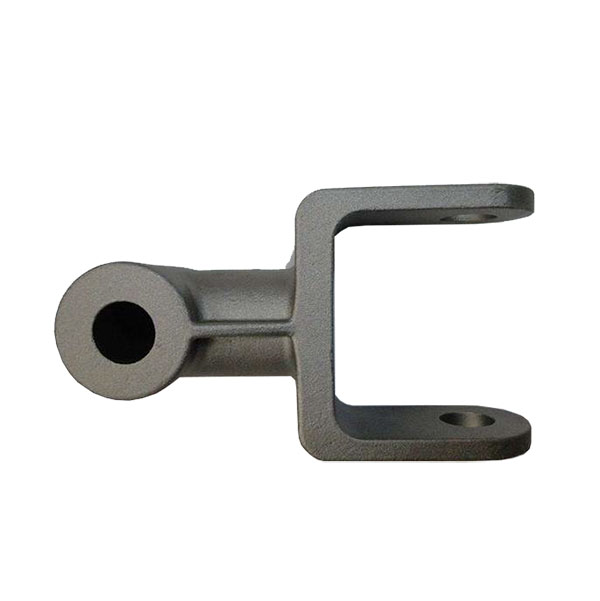
China Steel Precision Casting Company
Material: Stainless Steel Process: Precision Casting + CNC Machining Weight: 4.8 kg Application: Industry
China Steel Precision Casting Company with CNC Precision Machining and OEM Custom Services
China Steel Precision Casting Company with CNC Precision Machining and OEM Custom Services
In the production of steel castings, cast steel smelting is a key process. Before each pouring, a pre-furnace analysis is required. The proportion of each chemical element must meet the requirements of customers and practical applications.
In order to increase the smelting speed and ensure the quality of castings, ingots with qualified scouring composition are generally used abroad. However, in Chinese foundries, metal materials used for smelting are divided into two types: recycled materials and new materials. Recycled material refers to the pouring and riser system of castings, scrap castings, etc. Before use, the chemical composition and grade should be analyzed clearly, and the surface impurities and oxide scale should be removed by shot blasting or sandblasting, and then set aside, or the recycled material should be smelted and poured into ingots for use. New materials are ingots made by certain grades of metal bars or scraps, as well as commonly used ferroalloys and pure metal materials. The metal bars and ingots of certain grades need to be analyzed for composition and meet the standards, and the size of the bars needs to be consistent with the sizes of the electric furnace and crucible.
▶ Casting Process of Stainless Steel
✔ Lost Wax Casting
Investment (lost wax) casting is a method of precision casting complex near-net-shape details using replication of wax patterns. It is a metal forming process that typically uses a wax pattern surrounded by a ceramic shell to make a ceramic mold. When the shell dries, the wax is melted away, leaving only the mold. Then the casting component is formed by pouring molten metal into the ceramic mold. Also called precision investment casting, lost wax casting could achieve complex forms with exceptional surface qualities for both small and large casting parts in a wide range of materials such as carbon steel, alloy steel, stainless steel...etc. lost wax casting offers tighter dimensional tolerances, better surface finishes, produces near-net shape parts which therefore require less machining and other processing, and allows for the steel casting of complex-geometry parts and intricate details such as casting marks and company logos.
Advantages of Investment Casting Components:
• Excellent and smooth surface finish
• Tight dimensional tolerances.
• Complex and intricate shapes with design flexibility
• Capability to cast thin walls therefore a lighter casting component
• Wide selection of cast metals and alloys (ferrous and non-ferrous)
• Draft is not required in the molds design.
• Reduce the need for secondary machining.
• Low material waste.
✔ Lost Foam Casting
Lost foam casting process produce near the near net shape casting parts with lost patterns made from expandable polystyrene, EPS. The EPS positive patterns are mounted to a casting system. After dressing, the pattern clusters are inserted into pouring vessels, which are then filled with unbound quartz sand. During casting, the patterns remain in the compacted sand mould.
Advantages of Lost Foam Castings:
• Greater design freedom in the construction of cast parts
• Small quantity is possible due to the layered structure of the pattern.
• Lower need for secondary machining with near net shape.
• High flexibility by short start up lead time.
• Longer EPS mould span life, thus lower average tool costs
✔ Vacuum Casting (V Process Casting)
Vacuum castings are the metal parts that are produced by the vacuum casting method, which is also called v process casting or vacuum molding casting. They are different from typical investment castings due to the technique used to create the molds. The process begins by placing a two-piece mold in a vacuum chamber. The vacuum then draws the molten metal into the mold. Finally, the casting is solidified in an oven and the mold is removed in order to release the final product.
▶ Capabilities of Cast Steel Components
• Max Size: 1,500 mm × 1000 mm × 500 mm
• Weight Range: 0.1 kg - 500 kg
• Annual Capacity: 5,000 tons - 6,000 tons
• Tolerances: On Request.
▶ How We Inspect the Cast Steel Components:
• Spectrographic and manual quantitative analysis
• Metallographic analysis
• Brinell, Rockwell and Vickers hardness inspection
• Mechanical property analysis
• Low and normal temperature impact testing
• Cleanliness inspection
• UT, MT and RT inspection
▶ Post-Casting Process
• Deburring & Cleaning
• Shot Blasting / Sand Peening
• Heat Treatment: Normalization, Quench, Tempering, Carburization, Nitriding
• Surface Treatment: Passivation, Anodizing, Electroplating, Hot Zinc Plating, Zinc Plating, Nickel Plating, Polishing, Electro-Polishing, Painting, GeoMet, Zintec
• Machining: Turning, Milling, Lathing, Drilling, Honing, Grinding,
▶ Application of Stainless Steel Castings:
• Building hardware
• Large Machinery Components
• Railway Freight Cars
• Marine Hardware
• Hydraulics Cylinders
• Heavy Duty Trucks
• Agricultural Equipment
 русский
русский



